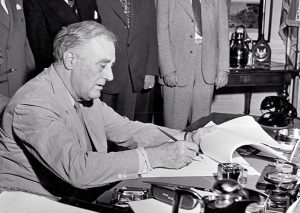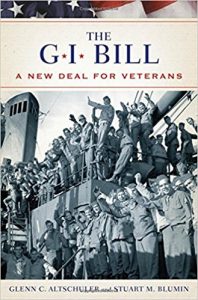scholarship

 My grandniece, Jadyn Mortensen is graduating from high school today, and I can’t believe that she could possibly be that grown up…except for the fact that I have watched her growing up these 18 years. I would like to say that there is one standout point of amazingness with Jadyn, but there just isn’t. Jadyn is a girl with many talents. If you put Jadyn on a horse, she will show you how to be the most amazing barrel racer I have ever seen. Ok, I could be biased, but she is really good, nevertheless. She is so good in fact, that the University of Wyoming saw her talent, and signed her to the rodeo team immediately…along with a full ride scholarship. The value of her talent has proven to be great.
My grandniece, Jadyn Mortensen is graduating from high school today, and I can’t believe that she could possibly be that grown up…except for the fact that I have watched her growing up these 18 years. I would like to say that there is one standout point of amazingness with Jadyn, but there just isn’t. Jadyn is a girl with many talents. If you put Jadyn on a horse, she will show you how to be the most amazing barrel racer I have ever seen. Ok, I could be biased, but she is really good, nevertheless. She is so good in fact, that the University of Wyoming saw her talent, and signed her to the rodeo team immediately…along with a full ride scholarship. The value of her talent has proven to be great.
Jadyn plans to study Mechanical Engineering. I wasn’t totally sure what that was, so I had to look it up. At first, I thought it was about building machines, and to a degree it is, but there is so much more to it than that. What I found was that “mechanical engineers are problem solvers who apply their skills to design, develop, build, and test all sorts of mechanical devices, tools, engines, and machines in just about every type of industry.” They are like the designers of the future!! A mechanical engineering student works with a team to develop “a wide range 
 of products and systems including, transmissions, engine parts, aircraft engines, control systems, prosthetic devices, disk drives, printers, semiconductor tools, sensors, gas turbines, wind turbines, fuel cells, compressors, robots, machine tools, space shuttle vehicles, turbines, pumps, power plants, factories, and more.” When I look at the list of possible career options for a mechanical engineer…well, it’s endless!! To top it off, mechanical engineering is actually “ranked among the top 10 fields for employment nationally, and according to the US Bureau of Labor Statistics (BLS) engineers have a median annual wage of $91,010 (May 2019), and the engineering field projects to have employment growth of nearly 140,000 new jobs over the next decade.” Ok, I’m impressed. Like I said, Jadyn is a multi-talented girl, and it looks like her options are as big as her many talents.
of products and systems including, transmissions, engine parts, aircraft engines, control systems, prosthetic devices, disk drives, printers, semiconductor tools, sensors, gas turbines, wind turbines, fuel cells, compressors, robots, machine tools, space shuttle vehicles, turbines, pumps, power plants, factories, and more.” When I look at the list of possible career options for a mechanical engineer…well, it’s endless!! To top it off, mechanical engineering is actually “ranked among the top 10 fields for employment nationally, and according to the US Bureau of Labor Statistics (BLS) engineers have a median annual wage of $91,010 (May 2019), and the engineering field projects to have employment growth of nearly 140,000 new jobs over the next decade.” Ok, I’m impressed. Like I said, Jadyn is a multi-talented girl, and it looks like her options are as big as her many talents.
Jadyn’s interest in machines, is not something she came by accidentally. Jadyn has grown up around boats, 4 wheelers, snowmobiles, and motorcycles too. In fact, she has mixed motorcycles with snow by adding skis to the motorcycle. She and her parents, Amanda Reed and Sean Mortensen love every kind of “toy” and they are talented on all of them. Jadyn and her dad have even filmed YouTube videos of themselves “struttin’ their stuff” 
 on their toys. They are interesting to watch, and Jadyn and her dad love to tease each other while they ride. I think that really the hardest part about Jadyn going off to college is that she has been very close to her parents her whole life, and while UW is not so far away, it is far enough that her parents will definitely feel the empty nest she will be leaving them with. Today, Jadyn is graduating from high school. The world is waiting Jadyn!! I can’t wait to see where life takes you. Congratulations!! We love you!!
on their toys. They are interesting to watch, and Jadyn and her dad love to tease each other while they ride. I think that really the hardest part about Jadyn going off to college is that she has been very close to her parents her whole life, and while UW is not so far away, it is far enough that her parents will definitely feel the empty nest she will be leaving them with. Today, Jadyn is graduating from high school. The world is waiting Jadyn!! I can’t wait to see where life takes you. Congratulations!! We love you!!
 These days, every military veteran has available to them, a compensation package to thank them for their service. Returning servicemen have access to unemployment compensation, low-interest home and business loans, and…most importantly, funding for education, but this was not always the case. In fact, there was a time when returning veterans had to fight for bonuses they were supposed to receive, which brought about the 1932 Bonus March, in which 20,000 unemployed veterans and their families flocked in protest to Washington. I think most of us would agree that our veterans should not have to fight for the things promised to them for their service, after they have already spent time fighting for their country.
These days, every military veteran has available to them, a compensation package to thank them for their service. Returning servicemen have access to unemployment compensation, low-interest home and business loans, and…most importantly, funding for education, but this was not always the case. In fact, there was a time when returning veterans had to fight for bonuses they were supposed to receive, which brought about the 1932 Bonus March, in which 20,000 unemployed veterans and their families flocked in protest to Washington. I think most of us would agree that our veterans should not have to fight for the things promised to them for their service, after they have already spent time fighting for their country.
President Franklin D Roosevelt was responsible for the sweeping New Deal reforms, many of which were really not good for this nation or its people, but there was one part of that legislation that has been a good thing for returning veterans…the G.I. Bill. On this day June 22, 1944, President Franklin D Roosevelt signed the G.I. Bill. It was an unprecedented act of legislation designed to compensate returning members of the armed services, known as G.I.s, for their efforts in World War II. The G.I. Bill…officially the Servicemen’s Readjustment Act of 1944…was proposed in an effort to avoid a relapse into the Great Depression after the war ended. The American Legion, a veteran’s organization, successfully fought for many of the provisions included in the bill, which gave returning servicemen the compensations they now have. By giving veterans money for tuition, living expenses, books, supplies and  equipment, the G.I. Bill effectively transformed higher education in America. Before the war, college had been an option for only 10-15 percent of young Americans, and university campuses had become known as a haven for the most privileged classes. This was not what America was supposed to be about. By 1947, the contrast was striking. Veterans made up half of the nation’s college enrollment. Three years later, nearly 500,000 Americans graduated from college, compared with 160,000 in 1939. Sure, they had to serve their country, but for many young people, this was not only what they felt was their duty, but it also became a scholarship program.
equipment, the G.I. Bill effectively transformed higher education in America. Before the war, college had been an option for only 10-15 percent of young Americans, and university campuses had become known as a haven for the most privileged classes. This was not what America was supposed to be about. By 1947, the contrast was striking. Veterans made up half of the nation’s college enrollment. Three years later, nearly 500,000 Americans graduated from college, compared with 160,000 in 1939. Sure, they had to serve their country, but for many young people, this was not only what they felt was their duty, but it also became a scholarship program.
As educational institutions opened their doors to this diverse new group of students, overcrowded classrooms and residences prompted widespread improvement and expansion of university facilities and teaching staffs. The bill was not only good for the veterans, but also for the economy, as more teaching jobs were created. An array of new vocational courses were developed across the country, including advanced training in education, agriculture, commerce, mining and fishing…skills that had previously been taught only informally. Some of these classes are responsible for some of the jobs that everyday Americans, even those without college educations have held. Jobs such as mining, and farming, and even fishing became commonplace.

The G.I. Bill became one of the major forces for economic expansion in America that lasted 30 years after World War II. Only 20% of the money set aside for unemployment compensation under the bill was given out. Most veterans found jobs or pursued higher education. Low interest loans enabled millions of American families to move out of cities and buy or build homes outside the city, changing the face of the suburbs. Over 50 years, the impact of the G.I. Bill was enormous, with 20 million veterans and dependents using the education benefits and 14 million home loans guaranteed, for a total federal investment of $67 billion. Among the millions of Americans who have taken advantage of the bill are former Presidents George H.W. Bush and Gerald Ford, former Vice President Al Gore and entertainers Johnny Cash, Ed McMahon, Paul Newman and Clint Eastwood, and closer to home, my brother-in-law, Ron Schulenberg, as well as my nephew, Allen Beach and soon, his wife, Gabby.

